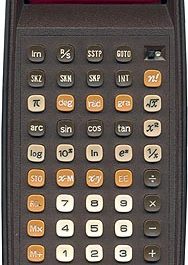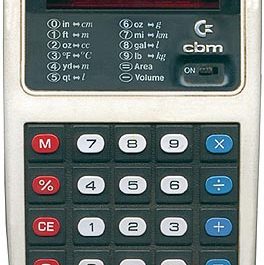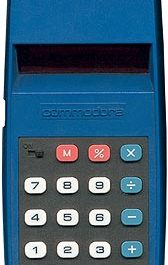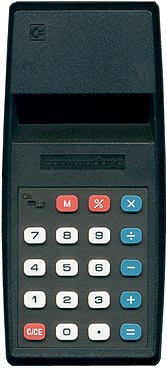
The Commodore 796M calculator, introduced in 1976, is a four-function device with additional features for percentages and multi-key memory, making it a versatile tool for both students and professionals at the time.
Design and Construction
The Commodore 796M is encased in a black, softly stippled two-piece plastic case, with a smooth keyboard surround that adds a touch of elegance. The raised logo and brand name give it a distinctive look, while the heavily inset flat red plastic display filter ensures a bright image, albeit with a limited viewing angle. The bold button color scheme is both aesthetically pleasing and functional, with keys that are wobbly and squashy, providing a tactile feedback that enhances user experience.
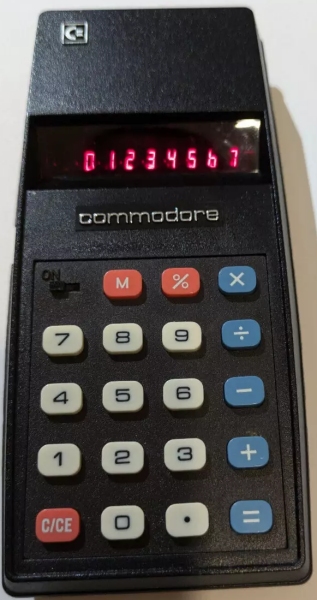
Dimensions and Weight
The calculator measures approximately 65mm in width, 137mm in height, and 24mm in depth, making it compact and portable. Weighing in at a mere 76g (excluding batteries), it is lightweight and easy to carry around.
Power and Display
The Commodore 796M is powered by a 9V DC, PP3 size battery. It also accepts an adaptor (DC-620R, 505, 506, or 507) through a socket on the left side in the middle. Users are advised to remove the batteries before using the adapter to prevent any potential issues. The display features an 8-digit red LED with a bubble lens, accompanied by a ninth negative and error indicators, ensuring clear visibility of calculations.
Features and Components
The calculator boasts a range of features that make it a reliable tool for various calculations. It includes nineteen oval plastic keys, covering ten digit keys, four arithmetic function keys, a decimal point key, a total key, a clear/clear entry key, a memory key, and a percentage key. The device is powered by a Commodore 3D-98 7610 CPU, a 22-pin DIL chip. The keyboard doubles as the main CPU board and is fixed to the front via three screws and three rivets.
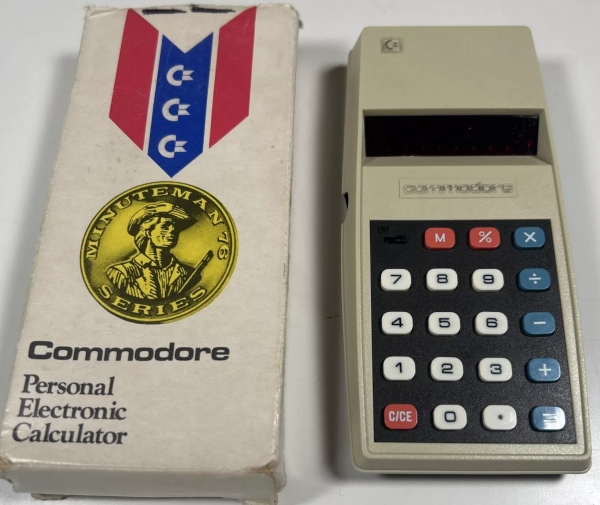
Logic
- The (C/CE) button is used to clear the last entry of a number press; pressing it again clears the entire calculator.
- Overflow on number input is suppressed; typing in a nine-digit number ignores the ninth digit.
- An overflow shows the result with an “E” in the far left (ninth) digit, indicating a negative or positive overflow, which is recoverable by dividing by 10 or its multiples.
- Divide by zero results in an “E00000000” error, which is recoverable by dividing by 1.
- There is no constant on any function.
- Memory usage is by two key presses: (=)(M) to store, (+)(M) or (-)(M) to accumulate or decrement, and (0)(=)(M) to clear.
- A non-zero number in the memory is indicated by the far left (ninth) digit’s decimal point being alight.
- Negative numbers are flagged by a “-” sign in the immediate left digit, allowing full eight-digit negative numbers.
- The percentage key divides by 100, making it useful for recovering overflows.
The Commodore 796M calculator is a well-designed, functional tool that offered a range of features suitable for various simple mathematical tasks. Despite its limitations, such as the lack of a constant on any function, the calculator’s logic is sound, with good recovery mechanisms for errors and overflows.
